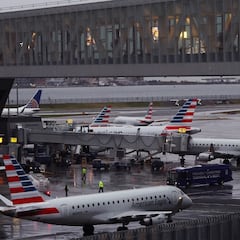What are the causes of air turbulence and why is climate change making it worse?
The recent death of a British passenger after his plane encountered dangerous winds has reignited the conversation surrounding man’s affect on the planet.


Turbulence is a major hazard for aviation, especially on long-haul flights like a recent London to Singapore journey, injuring around 30 of passengers and killing one.
Turbulence is formed through various mechanisms, including wind shear, thunderstorms, and interactions with terrain. Research has shown these issues are being exacerbated by climate change, increasing the frequency and strength of turbulence.
How turbulence is caused
One of the most dangerous types of turbulence is caused by wind shear, which occurs when layers of air flow at different velocities. This can lead to abrupt changes in altitude and attitude, potentially throwing an aircraft momentarily out of control.
Thunderstorms are another major source of turbulence, with strong updrafts and downdrafts capable of displacing an aircraft by thousands of feet. The most severe turbulence is usually found near the mid-levels of a thunderstorm, between 12,000 and 20,000 feet.]
Seriously, air turbulence atau gelora udara makin sering terjadi.
— Hezeri Samsuri (@HezeriSamsuri) May 21, 2024
Banyak Flights aku naik memang terkena, tapi tak seteruk yang ini, sampai seorang maut (warga British lekaki berusia 70 tahun).
Flight SQ321 dari London ke Singapore terpaksa mendarat di Bangkok.
Pesawat Boeing… pic.twitter.com/pchtFuCfel
Mechanical turbulence is caused by the interaction of wind with terrain and obstacles, creating eddies and gusts. The intensity depends on wind speed, terrain roughness, and atmospheric stability. Mountains can generate severe turbulence on their leeward side, with strong vertical flows reaching up to 70,000 feet.
At its strongest, turbluence can damage aircraft and cause them to lose control.
Why is climate change making it worse?
Climate change is exacerbating these turbulence-causing factors by warming the atmosphere and altering wind patterns. As global temperatures continue to rise, turbulence is expected to become more frequent and intense in the coming decades.
A study by researchers at the University of Reading, England, found that over the North Atlantic the annual duration of severe clear-air turbulence increased by 55% from 1979 to 2020. Other busy flight routes over the US, Europe, the Middle East, and the South Atlantic also saw significant increases.
Related stories
“Following a decade of research showing that climate change will increase clear-air turbulence in the future, we now have evidence suggesting that the increase has already begun,” said Prof Paul Williams, an atmospheric scientist who co-authored the study.
Aside from the health concerns of passengers, the aviation industry loses between $150 million and $500 million in the US each year due to effects of turbulence.

